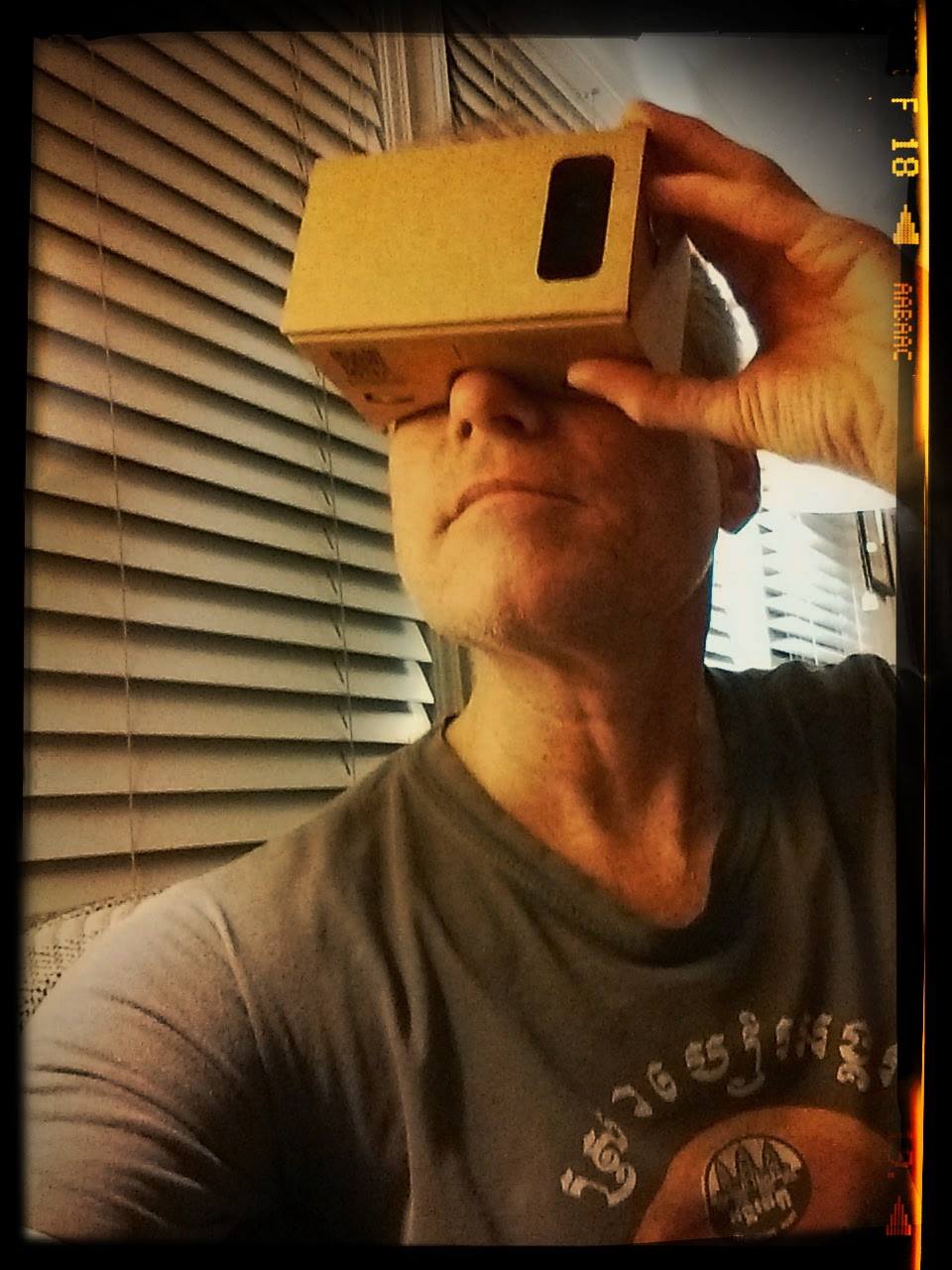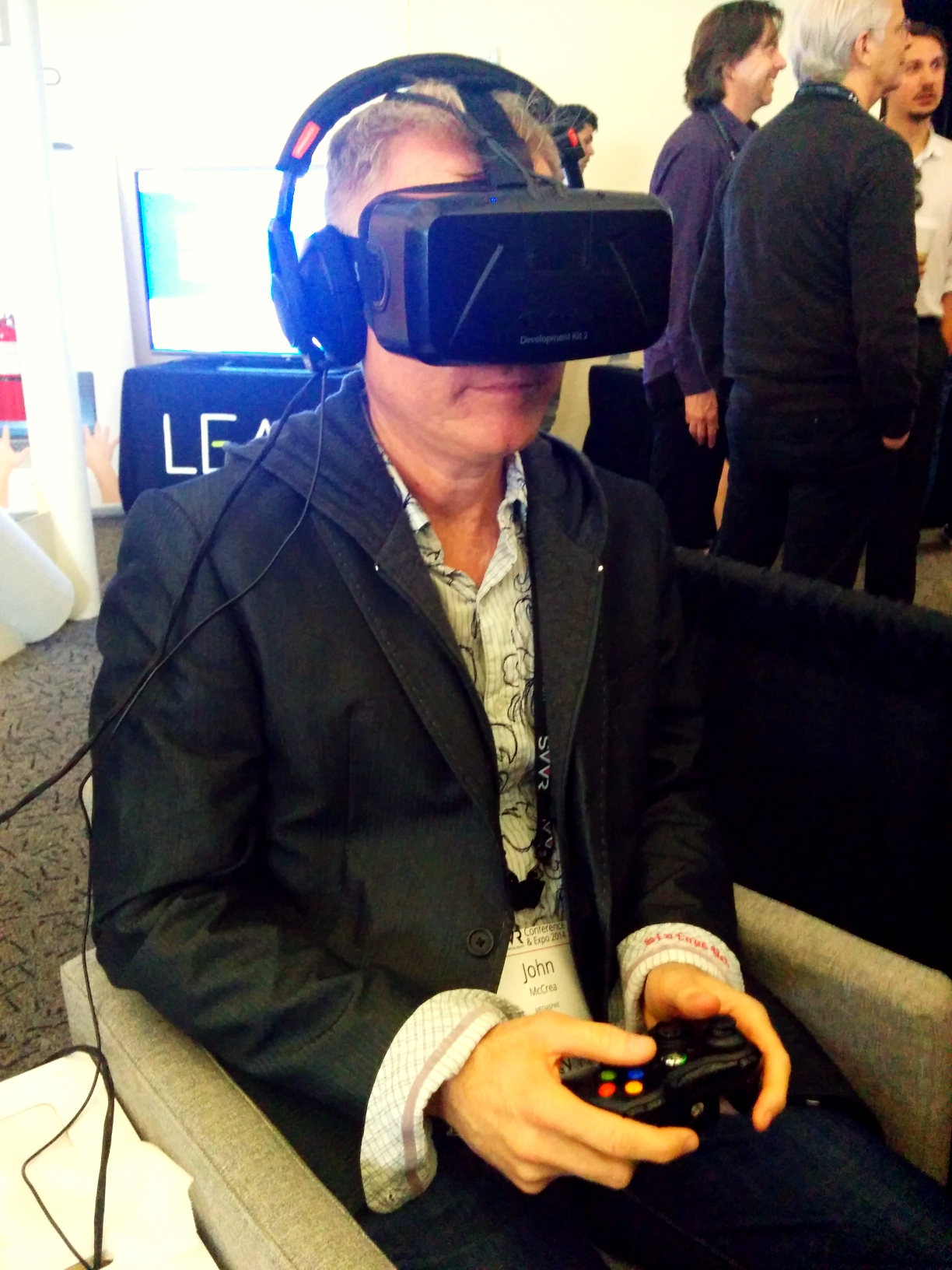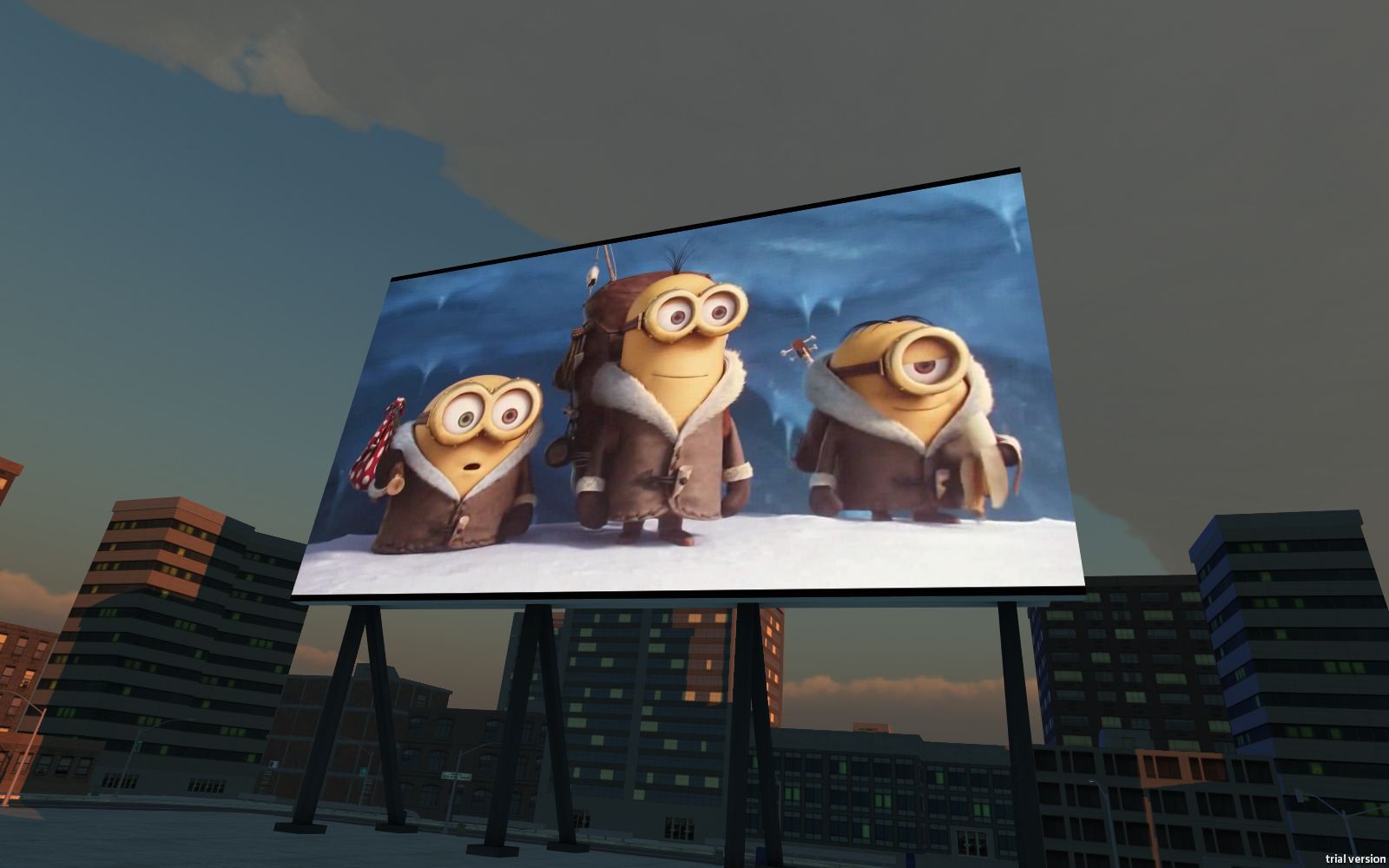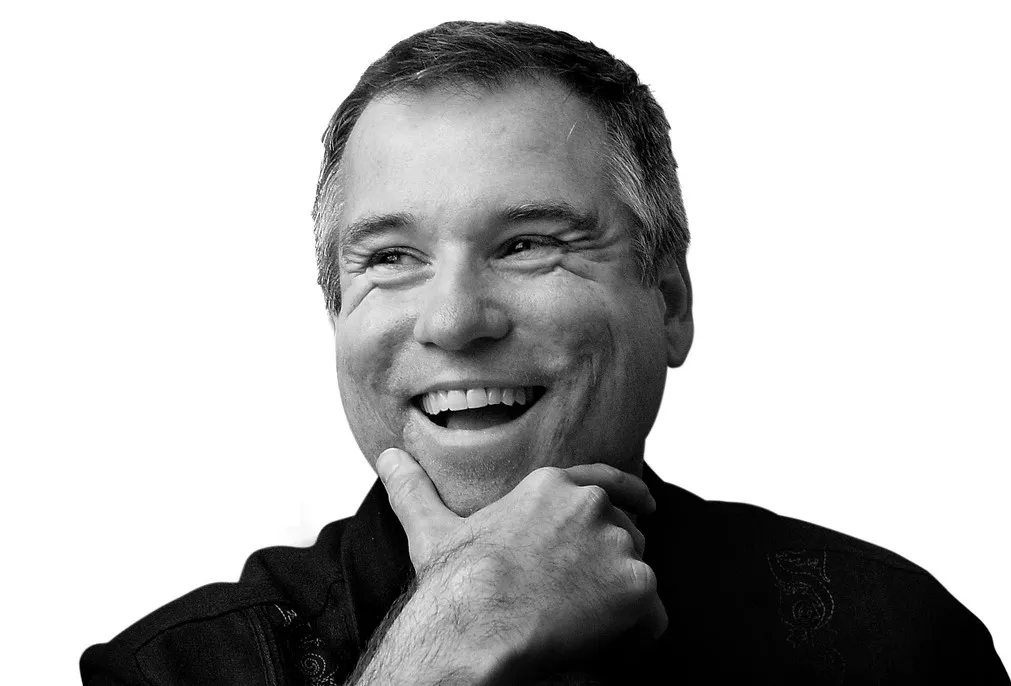Virtual reality is here to stay. It is showing up everywhere – from being an integral part in large scale conferences to showing up at small, close knit meetups. Practically everywhere you look, VR is booting up to alter every industry it touches; but where did it all come from? Why is virtual reality proliferating now like never before?
In a series of interviews and re-publications, we venture into the past to see where this exciting virtual reality ride began. Today, we interview John McCrea who had the opportunity to try the legendary VR system developed decades ago by a pioneering company called VPL Research. He and his colleagues got a rare glimpse into the future of the medium during that ‘field trip.’ McCrea tested out a prototype of a head mounted display (HMD) along with a wearable data glove, which bares subtle similarities to the hardware of today.
Through a handful of email messages, we asked McCrea what it was like to teleport into a virtual reality experience while the medium was still in its early days. In this interview, he compares the culture of the 1990s and to the resurgence of VR now. So sit back, relax, and enjoy the show.
What led to your 1st virtual reality experience, John?
I learned about the concept of “virtual reality” for the first time in 1990, when the Wall Street Journal wrote about VPL, Jaron Lanier’s pioneering startup that coined the term. The article’s headline hyped this new technology as nothing less than “electronic LSD”. That article certainly piqued my interest. So, when I moved to Silicon Valley the following Fall to go to Stanford business school, I made visiting VPL my top priority and the first test of my new network. One of my classmates had a connection to George Zachary (now at CRV), who was heading up the product team, and we arranged a sort of “field trip” for a few of us who had interest.
I had a sense that this was an historic moment, so I brought my 35mm film camera (digital cameras had not yet become consumer products). I got someone to take pictures of me having my first virtual reality experience.

Besides George Zachary, who else did you meet that day?
I think we just met with George. For sure, we didn’t get to meet Jaron Lanier. (I would definitely remember that!) Since it was more of a field trip, not so much a business meeting, we didn’t want to get in the way.
What was it like to visit the infamous VPL Research lab?
Some things were very much like today, but others couldn’t be more different. The big, black, immersive headset wasn’t all that different from, say, a DK2, at least at first glance. Plus, there was an external input device (in the form of hand-tracking glove).

But as you can see in the photos, the demo was driven by a bank of electronics that looks out of an old science fiction movie. And the cables were kind of over the top – so many, so thick.
Of course, the other huge difference was how crude the scenes were. The polygon count was extremely low. I took a photo of the external monitor, and looking at it now, it’s kind of hard to believe what all the excitement was about.
I think that says a lot about how powerful the idea of virtual reality is. Our ability to imagine how awesome it would become caused many of to greatly underestimate the gap between early ‘90’s compute/graphics power and the threshold for non-nauseating, completely believable virtual reality.

How intuitive was the hand tracking back then? Did you feel like your hand was actually in a virtual environment?
A little hard to remember after all these years, but it was good enough to generate continued excitement about VR, at least for me. I don’t recall any discussion of minimum frame rate at the time; but obviously they were keeping to a pretty tight polygon budget.
How would you describe the VR culture as a whole back then?
I didn’t end up playing in VR during the early ‘90’s phase, so can’t really comment on that.
Overall, it was a dreary time in Silicon Valley in ‘91 and ‘92. We were in a recession. Progress was stifled by the “Wintel” duopoly. And the Web revolution had not yet arrived to propel us to new highs.
But by early ’94, I had made it to the one bright spot, the then-hottest company in the Valley, Silicon Graphics (also known as SGI). It ended being the perfect place to be for someone enamored with the vision of virtual reality, as they had all the best people in the graphics community in one big sprawling campus. (A campus that is today Google’s headquarters.)
Of course, when the Web came, via Mosaic and then Netscape, VR made its first comeback, in the form of VRML, thanks to Mark Pesce and Tony Parisi. And I was in the absolutely right place at the right time to ride that wave, along with my colleagues Gavin Bell, Rikk Carey, David Frerichs, and many other pioneers.
What are the key differences in the Virtual Reality scene now compared to the past?
The funny thing is that dream is largely unchanged, and it is so vivid and compelling that it brings many of the same sort of people to the scene. It’s the part of Silicon Valley with the greatest overlap with science fiction. Very techno utopian. Lots of enthusiasm and energy. I see way more similarities than differences between the mid- ‘90’s scene and the new one.
Tell us about some of the virtual reality experiences that you have recently tried.

The one that I’ve spent the most time in has been an app that we’ve been building at MediaSpike. Not ready to share what it is, but I can tell you that I’ve never had a more rewarding product leadership experience than getting to put on a headset and see a VR idea of mine come to life.
Of course, I was psyched to see the Crescent Bay demos at GDC — and bummed that I didn’t see the Vive demo.
Other than that, I spend way more time checking out what people are created for Google Cardboard. I’m a bit of an outlier on that front. I think Cardboard presents a credible path to mass adoption in the next 12 months.
In your opinion, what does the future of the medium look like?
First off, I’d say that’s a bit like asking in 1994 what the future of the Web will look like. Or in 2007 what the future of mobile will look like.
By that, I mean that Virtual reality isn’t just some new gadget; it’s the next mass medium. As such, it will enable a diversity of apps and experiences as great or greater than we’ve seen for the mediums that have come before it.
Like the Web and mobile, expect the VR medium to evolve through a variety of phases. A challenge for developers is to create the right experiences for the right phase of the market. If your experience requires a multi-thousand dollar computer and a specific input device, embrace the reality that you will not have millions of consumer users.
How important is mobile VR to the mass adoption of the medium?
I’m long on Mobile VR. When we spent $4,000 on a new computer to run our Oculus demo, that told me VR isn’t going mainstream any time in the next two years. Then I had my “Mobile VR epiphany” thanks first to Google Cardboard, and then via Samsung’s Gear VR.
If you’re interested in getting to millions of users, I think mobile is the only way to get there in the next 18 months. And with how fast smartphones are getting better, I think Mobile VR is really how this becomes the next real mass medium.
Desktop VR is great for the hardcore elite and for special events, but I don’t see it as a very exciting market.
Is virtual reality the future of advertising?

That’s a topic that I have recent, vivid experience with. Late last year, one of the engineers at my startup, MediaSpike, got a DK2, so we decided to do a little experiment. We were focused on dynamically serving virtual product placement in mobile games, and we had built a demo game for iPad that showed how integrating brands into actual gameplay was way more effective than conventional digital advertising. So, we wondered what would happen if we ported that demo to Oculus Rift.
I’ll never forget the first time I put on the DK2 and stepped into that demo. First off, it is truly surreal to walk into a 3D game that you’ve experienced many times on the small screen. Also, this was not finished code, and by a fluke the camera was positioned in a way that made me 20 to 30 feet tall. I felt like a giant. And when I turned my head, there was one of the ad units, in this case a billboard, just a few feet away. Pow! Super crisp, bright, and so “real”. It really made the cityscape more believable.
Soon after, I saw an outdoor movie screen, playing a trailer for Minions, the next movie in the Despicable Me series. In the mobile version of our demo, we would spawn the trailer full screen after the user clicked on the movie theater. In the virtual reality version of the demo, the trailer just played as I approached. But the amazing thing was that the screen was 100 feet tall! I couldn’t take my eyes off of it.

Anyway, I could go on, but the key takeaways are: 1) Advertising in virtual reality can be really awesome. And, 2) it doesn’t even have to be all that custom. Part of the demo included a Minions branded blimp ride, which was a unique format, but the trailer and the billboards were essentially standard digital advertising inventory. And that means that it can be bought and sold at scale — and that at scale it can be personalized, targeted to the individual, as in Minority Report.
So, yes, I’m pretty jazzed about the potential for advertising in virtual reality. I think VR is the one thing that can save digital advertising and finally put a stake in the heart of the banner ad.
Where can people find out more about you?
Folks might enjoy checking out my blog, therealmccrea.com, where for the past year I’ve been doing a “20 Years Ago” series focused on the early days of the web. And they can follow me on Twitter, @johnmccrea. And look for me at the various VR meetups popping up around the Bay Area these days. I’m back, baby!
UploadVR’s “Flashback” series is an ongoing effort. We are looking for virtual reality pioneers who worked with VR in the 1990s and before. If you are one of those people or know someone who is, email Matthew Terndrup at terndrupm@gmail.com to arrange for an interview.
























